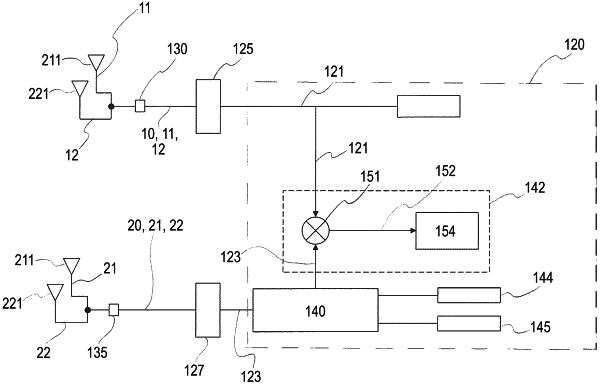| CPC G01S 13/347 (2013.01) [G01S 7/354 (2013.01); G01S 13/343 (2013.01); G01S 13/931 (2013.01)] | 23 Claims |

|
1. A radar device for automotive applications, the radar device comprising:
a radar circuit configured to transceive a first antenna signal and a second antenna signal, wherein the first antenna signal occupies a first frequency band and the second antenna signal occupies a second frequency band that is separate from the first frequency band, the first frequency band and the second frequency band having a frequency gap between them of at least a half of a frequency span of the first frequency band or the second frequency band, the first antenna signal comprises a first frequency sweep that spans the first frequency band, the second antenna signal comprises a second frequency sweep that spans the second frequency band, the first antenna signal being separate from the second antenna signal, the first antenna signal having a first range, the second antenna signal having a second range that is larger than the first range, the first antenna signal and the second antenna signal each including transmit signals and receive signals received in response thereto;
an antenna device configured to transduce the first antenna signal via a first antenna of the antenna device and the second antenna signal via a second antenna of the antenna device; and
a signal processing device configured to jointly process the first antenna signal and the second antenna signal by,
mixing the transmit signals with the receive signals to generate an intermediate signal such that a frequency of the intermediate signal is based on the first frequency sweep and the second frequency sweep,
determining a frequency difference between the transmit signals and the receive signals by measuring the frequency of the intermediate signal, and
determining, using both the first antenna signal with the first frequency band and the first range and the second antenna signal with the second frequency band and the second range, a distance to a target object irradiated by the antenna device based on the frequency difference.
|